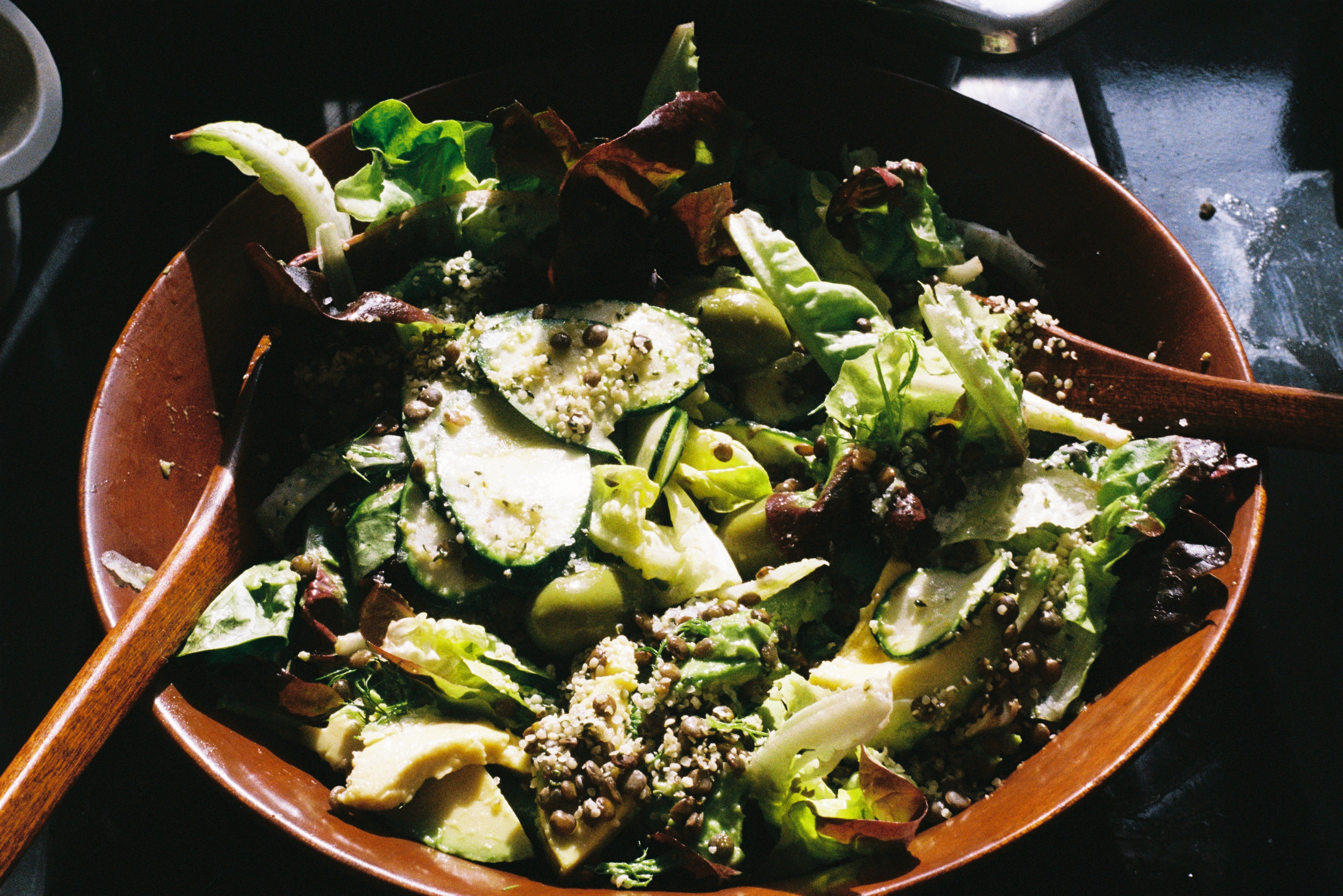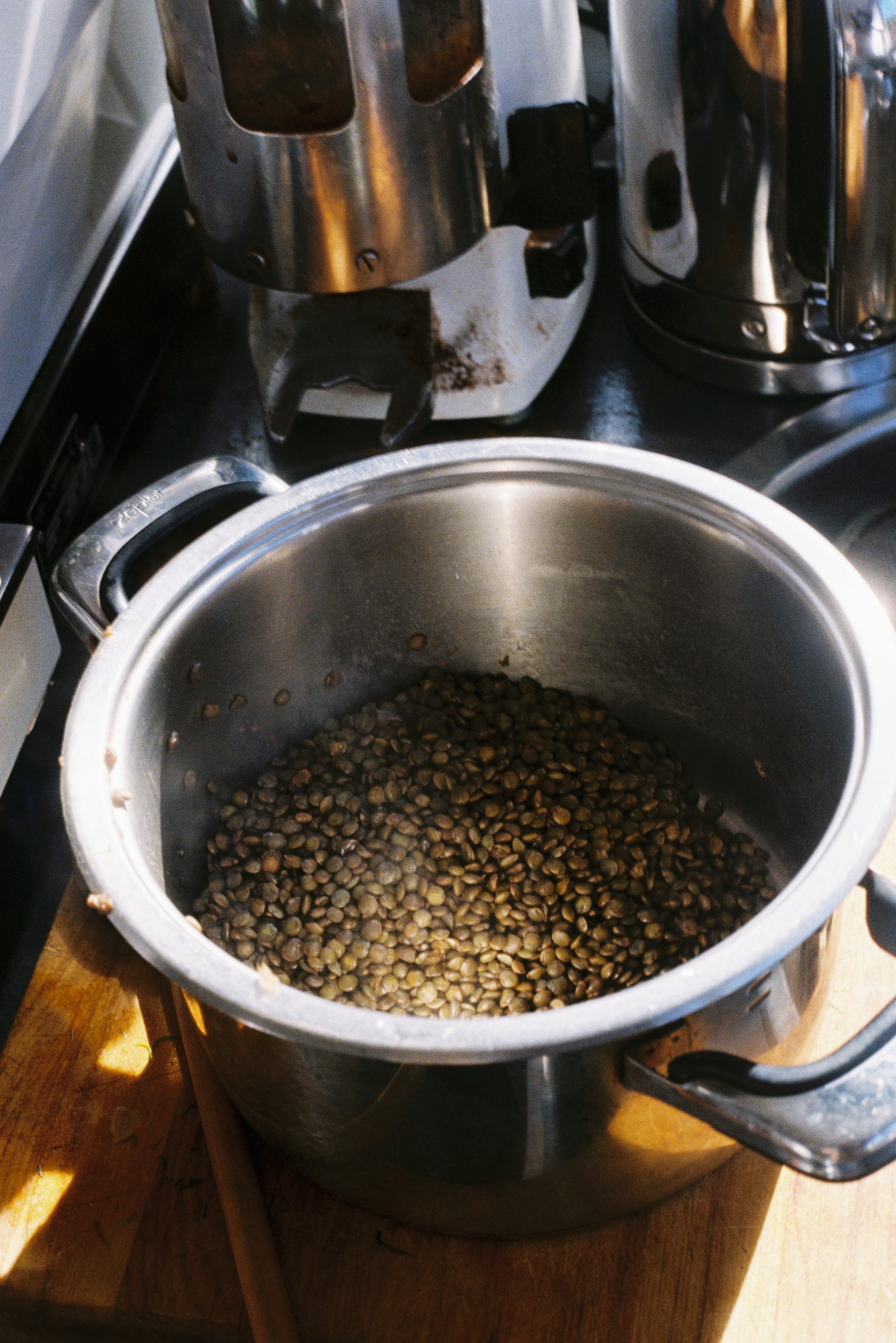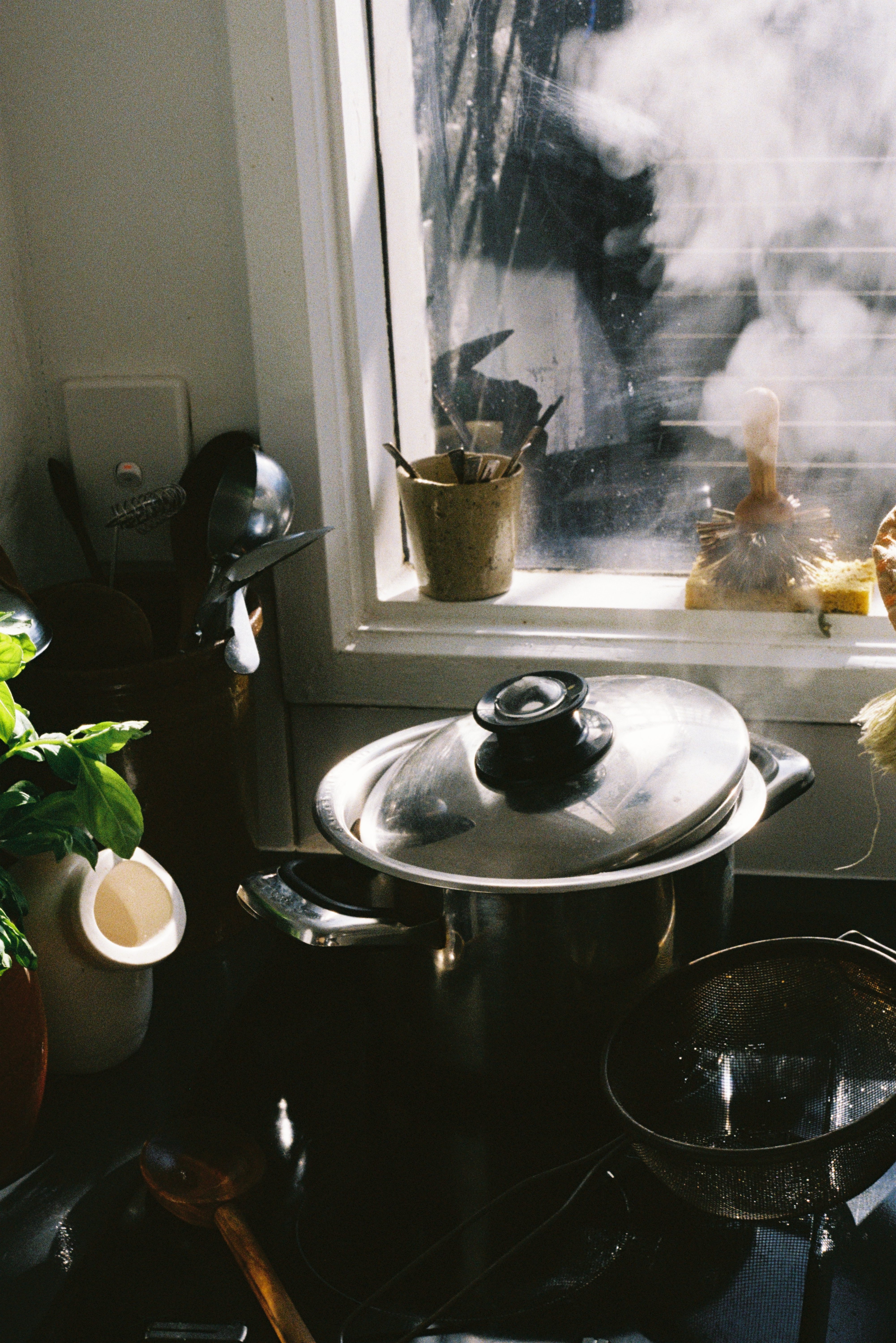Do you have to soak lentils before cooking them?
Lentils do not require soaking but it does increase mineral absorption by your body. Soaking will also reduce cooking time by around half. Place your lentils into a jar or bowl and cover with a few centimetres of recently boiled water. For each cup of lentils soaked, add a tablespoon of acid, such as lemon juice or apple cider vinegar. for 8 to 12 hours.
Increasingly, conversations discussing food affordability are being platformed, and so, while it does nothing to address the current issues, I can suggest eating more lentils. High in protein, I’ve included a guide for soaking, increasing nutrient bioavailability and a formula to create a nutrient-rich, delicious and satiating meal.
When faced with the question, "What should I eat?", my evening strategy is the always in-season bowl
Greens The least consumed food in the standard diet, and the most essential for inner and outer health — delivering an abundance of vitamins, minerals and fibre. Greens are your base so add an abundance. Choose from kale, spinach, chard, collard greens, cabbage, microgreens, beet greens, arugula, broccoli, bok choy, watercress, turnip greens and all kinds of lettuce.
Other vegetables Colour reflects different sets of phytonutrients, so for instance, red plants like tomatoes and peppers tend to contain phytonutrients like carotenoid lycopene, and Vitamin C. Yellow produce such as pumpkin and butternut deliver beta carotene, Vitamin A and alpha-carotene. If you’re doubling down on greens you’ll find phytonutrients like chlorophyll, iron, magnesium and Vitamin K — think asparagus, Brussels sprouts and peas. And not so colourful, the onion family contains allicin and flavonoids, parsnips, daikon radish, mushrooms and cauliflower.
Hummus Delivering healthy fats, protein and minerals, we always have a batch of homemade hummus in the fridge. Current house faves include this version with hemp seeds and our turmeric split pea hummus. For the photographs, I had out airy whipped hummus that I had prepared over the weekend. And I highly recommend making it!
Root vegetables High in antioxidants, sweet potatoes offer a wide variety of minerals gathered from the depths of the soil in which they grow. Other fibre, mineral-rich options include yams, beetroot and carrots. Potatoes — a personal favourite deliver more potassium than bananas and are a source of resistant starch, a prebiotic vital for gut health.
Grains, pseudo-grains and pulses Think brown rice, lentils and millet deliver protein, fibre, B vitamins and minerals such as iron, zinc, copper, and magnesium. Known as a pseudo-grain, quinoa is actually a seed and delivers a good supply of easily digestible protein. A favourite, black beans provide an abundance of plant-protein and minerals like folate, potassium, iron and magnesium. There are more, the mentioned are my go-to base carbs — they’re also all gluten-free. I like to keep cooked batches of rice and lentils in the fridge, adding a big spoonful to bowls like these. This sort of partial meal prep allows dinner to happen in a moment.
Ferments like sauerkraut and kimchi Real ferments are actually raw with all their nutrients intact—the natural fermentation process leaves ferments teeming with gut-friendly bacteria. When we populate our systems with an array of probiotics, we support our systems, good digestion, skin, immunity, and mood. It’s super easy (and affordable) to prepare your own at home as we do.
Dressing Olive oil, black pepper. Freshly squeezed lemon juice (and zest).
Optional Savoury yeast provides high mineral content, amino acids and B vitamins. Sprinkle it on everything including your toast. Half an avocado has 7 grams of fibre and roughly 2 grams of protein in addition to an abundance of minerals and a great source of vitamins C, E, K, and B-6. A perfect protein, hemp seeds deliver an abundance of phytonutrients and GLA (gamma-linoleic acid). High in minerals, like zinc and calcium, sesame seeds, much like sunflower seeds, provide protein, healthy fats, minerals and fibre.
Cook and connect to yourself and Mother Earth
The transcendent quality of simple ingredients, prepared with attention and care is what encourages me to choose the best and let the ingredients speak for themselves. Not complicated recipes. If we relax our beliefs on what is “right or wrong” when it comes to cooking, we’ll experiment more, seek out ingredients foreign to us and methods of combing them and using them. I’ve been smashing avocado with capers lately and accidentally made fermented mustard. Below is a go-to salad formula of mine, which is nutrient-rich, delicious and satiating. Sometimes recipes can stifle creativity, I encourage you to blend a combination of the below ingredients to find what suits you. This is a loose guideline; use what you have, these ingredients happen to always be in my fridge, use what's in yours.
There it is. Adapt and start working these vibrant plant-based bowls into your weeknight dinner rotation. And if you take photos first, we’d love to see. Tag us on Instagram @thisislagom.





